Introduction
The architecture of the 20th century was specific and different from the previous years. Living in the time of technological development, the architecture idea did not lag behind and the specialist from all over the world tried to present their ideas on the paper and to implement them in the buildings. Architectures wanted to present the world with the new masterpieces which would be absolutely different from the previously existing. The architecture had a tendency to the rational and functional buildings.
Looking on the cities in the 19th century and comparing them with those of the 20th century, a great change may be noticed. Innovative technologies played their role. Still, the architecture ideas were not on the last place. The Sydney Opera House is the greatest example of innovative thoughts and original ideas introduced in the public building by Jorn Utzon. The design of the building was particular and noticing and made it popular all over the world. The architect managed to create a building that became the symbol of Australia and will attract attention of the visitors from different countries for many years.
The main purpose of the paper is to dwell upon the architecture of the 20th century and Jorn Utzon as one of the representatives of the era, pointing to his design theories and concepts; taking his Sydney Opera House as the one of the brightest examples of the architecture of the 20th century, we will discuss the built form, typological characteristics of the design and the public evaluation of the building in use.
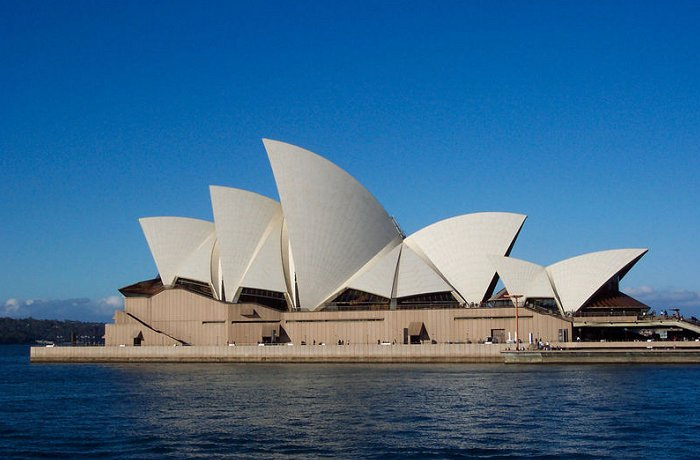
Architecture and urban design in the 20th century
The development of the world in general opened many of new ideas for architects. The development of cities was necessary as most of them were destroyed by war events. In fact, the changes of the cities were necessary for many reasons. People began think differently, the innovative technologies began to enter people’s life. Those who searched for freedom wanted to think broader, looking on the 20th century cities from the modern perspective, it may be concluded that most countries managed to change and to give the society what they wanted.
The 20th century may be called the age of ‘antiquarian curiosity and adaptation’ in architecture. The huge influence on the development of the cities and architecture in the 20th century is noticed from the West. Europe had already invented the modern style according to which the urban design was created and architecture changed, so the countries with less influence felt this impact on the architecture ideas. The rise of such trends in architecture as neo-Hellenism and no-classicism is noticed.
Looking on the public buildings in the 20th century, it is seen that the architects tried to make them as simple as they could from the first sight, still presenting the original ideas to highlight the purpose of the building and to make it unique. The tendency to the geographical decisions is seen. The architects did not use the bulky structures to show the individuality, but tried to present everything by means of the shell of the building, making it striking and at the same time avoiding any unnecessary details that made the building of the previous centuries massive.
Turning to Australian architecture and urban design, it should be noticed that the country government came to the problem of the country design with all responsibility and created the Australian Design Committee. The main aim of the committee was to follow the new projects of the urban design and either to reject or accept them. Still, the crucial role in the architecture development was the innovation force that moved the cultural life of Australia in 20th century.
One of the main influential factors that played the significant role in the Australian architecture in the 20th century was British impact. The British specialists came to Australia and presented their projects to the committee who accepted them and Britain started its work. One of the examples of such influence was the Australian Pavilion that was designed and constructed by Stanley Hall & Easton and Robertson, a British architectural firm.
The other impact on Australian architecture was from European journals. Moreover, the government interfered in the cultural life of the country and many projects had to be either brought to the close or the budget was reduced to minimum. These reductions were not always justified. The same happened with the main sight of Australia, the Sydney Opera House created by Jorn Utzon. The most peculiar fact is that Jorn Utzon had been absent in the country for seven years already when the project was completed. Still, the main fact that is remembered about Jorn Utzon is that he had brought the popularity to the country by means of the masterpiece he created and made it the world cultural treasure.
Jorn Utzon, the theories and concepts he follows in the architecture
Jorn Utzon was born in a simple family of naval architect and followed his fathers’ steps. The Royal Academy in Copenhagen was the place of Utzon’s education of architecture. He visited a number of countries and this may be one of the factors that influenced his understanding of architecture. This person was able to think innovatively and create buildings which were ‘well ahead of his time, far ahead of available technology, and he persevered through extraordinary malicious publicity and negative criticism to build a building that changed the image of an entire country’.
Starting the discussion with Jorn Utzon as a great architect, it should be noticed that he was only 23 when he presented his first architectural project. ‘The drawings show the preliminary ideas of architect Jorn Utzon and the model represents the resolution of the challenge of realizing Utzon’s concept for the shell or roof vaults’. The shell of the building is decided through the geographical figures that were perfectly shaped by the architect. Utzon’s decision required much work, still the innovative technologies of the time made it possible to create the building.
Looking on some other works by Jorn Utzon, such as Hammershoj care centre or Paustian Furniture Store, the geometrical concept is noticed. The architect chose the geometry as the main concept of his works and tried to follow it.
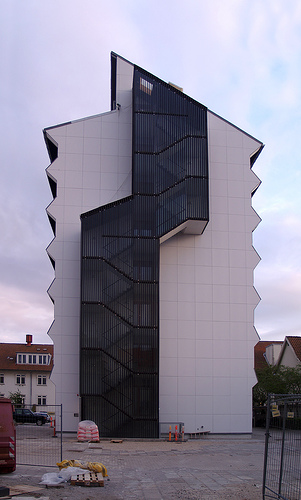
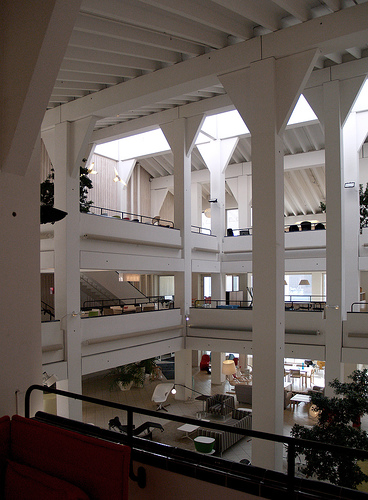
Stephen Skinner perfectly described the main theory which the young architect followed both while creating the project of the Sydney Opera House, as well as the other buildings he was lucky to design; he said, ‘some modern architects have created a kind of fluid architecture that rejects the Euclidean geometry of classical building and embraces organic and flowing forms’. The author means that some architects, and he includes Jorn Utzon to the rows, try to shift the natural forms and beauty to the buildings. Jorn Utzon supported the idea that the modern buildings may be something different than just boxes on the streets; he tried to present the society with the buildings which could echo the archetypical shapes.
Trying to understand the theories and concepts of the author according to which Jorn Utzon created his works, it is possible to suggest that he desired to use the sacred geometry of nature in his buildings. The development of the technologies made it possible to explore the organic structure of the natural elements and this knowledge is perfectly used by the architects such as Jorn Utzon. The tendency to nature is the main theory Jorn Utzon tried to follow and use in his work, as ‘nature is viewed as being a mercurial mixture of order and chaos, pattern and accident, simplicity and complexity’. So, it is not a surprise that nature became the muse for many architects, including Jorn Utzon.
Jorn Utzon was not afraid of the difficulties as he managed to implement his ideas into life. The nature was one of the main inspirational objects which pushed the architect to the creation of the buildings he desired. The nature structure is perfect and Jorn Utzon tried to create the same perfect buildings to please the viewers. The development of the innovation technologies and incredible imagination of the architect made it possible to create the masterpiece of architectural idea. The Sydney Opera House is the second building which was included in the UNESCO World Heritage Site with the architect alive. Giving the interview to some journal, Jorn Utzon opened the secret of his muse while the Sydney Opera House creation, ‘On one side of the line is truth – engineering, facts, mathematics, anything like that. On the other are human aspirations, dreams and feelings. Art is the meting on the line of truth and human aspirations’.
Sydney Opera House: The built forms and typological characteristics of the design
Describing the built forms and typological characteristics of the design of the Sydney Opera House, it is impossible to omit the factors which inspired the architect on the masterpiece creation. Stephen Skinner mentioned in his book that the Sydney Opera House was created under the inspiration by ‘the organic curves of the sea shells and the geometry of wind-blown sails’. Such association is not a surprise as Sydney is situated on the sea shore and it is natural that Jorn Utzon used sea and shell as the muse.
Moreover, the architect was strongly attracted by the natural motives and tried to implement them in his works. If to look on the Sydney Opera House from the side view, it is impossible to avoid that the building has the form of the wind-blown sails. The placement of the building on the sea adds to the effect of the sails.
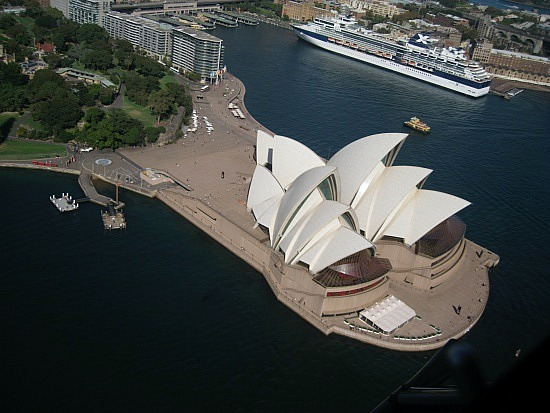
The plant view of the Sydney Opera House looks like a shell that is found in the sea. The nature motives noticed in this work by Jorn Utzon are not accidental as the author searched for inspiration in the surrounding environment, considering it one of the most powerful and incredible sources for inspiration.
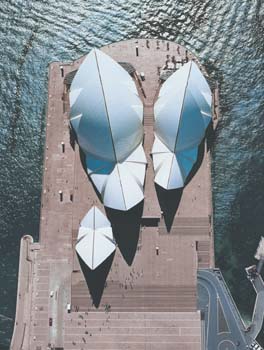
Bernstein stated in his article that Jorn Utzon was inspired by the sections of the orange for creation of the masterpiece. The idea of sails came to the architect earlier but he could not come to the conclusion on how to present it in the project and to make it real for building. Once, gazing at an orange, Utzon understood that each roof shell is of the same geometric curve and is like the similar parts from the sphere. After calculations, Utzon realized that ‘workers could create the roof vaults, or arches, by making cement ribs in molds onsite, lifting them into place by crane, and then gluing them together’.
Charles A. Jencks said in one of his works that the Sydney Opera House is the ‘example of metaphoric architecture with ambivalent symbolism’. The main idea of the quote may be understood from the information Utzon wanted to deliver to the audience. The building has the metaphorical appearance.
Meaning the shell or the sails, according to which the architect created the Sydney Opera House, and the play on the stage, Utzon was sure that the artists will unite the natural beauty and materialist innovation in their performances. The ambivalent symbolism is seen through the roof of the building. It is created as the number of orange pieces, as the architect believed, still, imagining the united sphere, perfect and wonderful.
Referencing the typological characteristics of the Sydney Opera House design, it should be mentioned that Jorn Utzon worked in the modernist school of thought, as his ideas were original, innovative and strange to the traditional school. The roof pieces were presented from the smaller to the larger elements, so it may be conclude that the Opera House was created in the hierarchical order. Thanks to this effect, the public may see volume size of the creation.
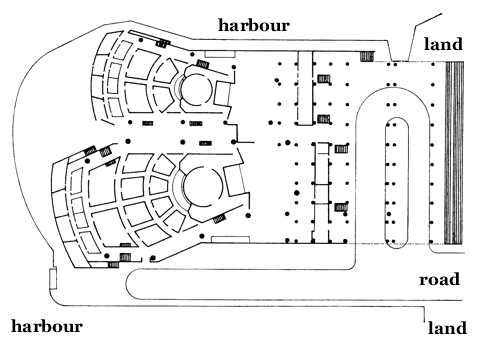
The intensity of development of the Sydney Opera House is natural and at the same time it is highly urban. Jorn Utzon tried to combine the nature beauty by presenting the audience with the structure of natural elements, such as shells, and the achievements of the science. Jorn Utzon made impossible, he managed to unite disconnected points, nature and scientific achievements.
It would have been impossible to see the Sydney Opera House at the view it stands for now without the achievements of science. The Sydney Opera House is the unity of the natural shells and the sea it stands on and the complicated structural and geometric problem. The architect managed to show what he wanted and the society managed to see it.
It should be taken into account that Sydney Opera House people see now is not exactly what was created by the architect, for some reasons. First, Jorn Utzon had to quit the project because of constant obstructions from the side of the Australian Government. The architect had to leave when he did not receive the payment. The main reasons for that were the over cost overruns and delays. Jorn Utzon could not work in such conditions and he left the county with his family.
After all, the project was completed in the next seven years. Jorn Utzon had never seen the completed variant of the building; he was not even invited to the commencement meeting. Still, he was awarded for many prizes, one of the most honored was the Pritzker Prize. Jan Utzon, Jorn Utzon’s son, said that while his father had never seen the completed variant of the Sydney Opera House in reality, it does not mean that he did not experience it. ‘As its creator, he just has to close his eyes to see it’. Moreover, as the cut of budget and some other reasons made the architect to change some elements for more acceptable and appropriate for some authorities in that Australian society.
Evaluation of the Sydney Opera House in use, the reaction of the public to the design
In contrast to Jorn Utzon, the citizens of Australia and the tourists from all over the world may see the Sydney Opera House, the masterpiece of architect’s decision and innovative developments in the time of its creation. Now, the public is proud to have the building in their country, still, there were times when people could not understand what it would be and how to react on strange construction built on Sydney’s shore.
As it was mentioned above, Jorn Utzon had to come through ‘extraordinary malicious publicity and negative criticism’ to complete his project. Most people did not understand why such building should be created in their city, and one of the main reasons they mentioned was that they did not want to change the entire look of their city, still beautiful and magnificent. There was the other idea for the negative reaction. The Sydney Opera House was built at the time of political and economical changes and it was very inconvenient for the city to continue expensive project.
Until the end of the works, Australian society was mostly shocked and frustrated of the Sydney Opera House creation. The first reason is that the citizens have never seen the whole picture of the constructions. From time to time the newspapers presented some pictures which did not inspire the society. Furthermore, people were frustrated by the constant delays of the works which were either connected with the financing or with the problems which were connected with the architectural failures.
The reaction of different people was absolutely unexpected, some admired the original idea and the magnificence of the building as well as appreciated the combination of nature and geometry; the others were frightened by the building as it was something new they could not understand. After all, the finished construction excites amazement and admiration of not only the citizens of Australia but of people all over the world.
When the project was set in operation, Australian citizens understood how lucky they were to have the masterpiece in their country. Still, some exigent opera visitors noticed that the shape of Sydney Opera House led to the reduction in the acoustic quality of the music, the acoustics are far below. Still, it should be noticed that it is not the Jorn Utzon’s failure.
The requirements for acoustic cater for speech and music are rather different, and it is impossible to combine it in one building. Moreover, it should be stressed that Jorn Utzon was not given an opportunity to finish the work he started as the constant pressure from the government made him refuse from the job and leave the country.
Conclusion
In conclusion, the architecture and the urban style of the 20th century were considered. There were many of different directions, depending on the country. Taking Sydney Opera House as one of the main masterpieces created in the 20th century by Jorn Utzon, it should be stressed that the architectural object combined nature, beauty and scientific innovation.
The main idea is that the architect used the science achievements that made it possible to see the inner structure of the nature elements and present the building in the view it is now. The shell or the wind-blew sails are the natural elements the architect wanted to deliver to the audience through his work; the mathematical sphere is the method by means of which it became possible to create the building. Jorn Utzon connected the mathematics with the imagination and he succeeded in it.
The Sydney Opera House is considered to be one of the greatest sights of the world which was awarded by a number of different prizes. According to the decree of fate, Jorn Utzon had never seen the completed work, still, as his son states, he has just close his eyes and he will see the Sydney Opera House as he was the person who created it, even though the building was completed in seven years after the architect had to leave Australia for ever.
Reference List
Bernstein, FA, ‘Jorn Utzon, 90, Dies; Created Sydney Opera House’ The New York Times, 2008, p. A45.
Bogle, M, ‘Building a better world of tomorrow with the tools of today’ in M. Bogle (ed), Designing Australia: readings in the history of design, Pluto Press Australia, Sydney, 2002, pp. 173-176.
Evers, B, C Thoenes & Kunstbibliothek, Architectural theory: from the Renaissance to the present: 89 essays on 117 treatises, Taschen, Hohenzollernring, 2003.
Shofner, S, Sydney Opera House, The Creative Company, Mankato, 2006.
Skinner, S, Sacred Geometry: Deciphering the Code, Sterling Publishing Company, New York, 2009.
Stevens, M, Music and Image in Concert, Music and Image in Concert, New York, 2009.
Sturgis, R, A History of Architecture, Read Books, Vancouver, 2008.
Williams, N, M Dent & National Library of Australia, National treasures from Australia’s great libraries, National Library Australia, Canberra, 2005.